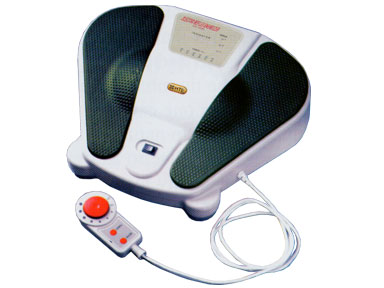| DEFINITION OF REFLEXOLOGY. |
 |
| Reflexology is the art of reprogramming the atoms, cells and electrons of the body to their original state through the triggering of signal points on the foot or hand. It is a science that deals with the principle that there are reflex areas in the feet and hands that corresponds to all the glands, organs and parts of the body. Reflexology is a unique method of using the thumb and fingers on these reflex areas. Reflexology includes, but is not limited to, relieving stress and tension, improving blood supply and promoting the unblocking of nerve impulses and helping nature achieve homeostasis. |
 |
| The feet have a fundamental relationship to the body. Signal points on the feet provide a link of communication to the major organs, muscles, and the circulatory, respiratory, digestive, elimination, reproductive and skeletal systems. |
 |
| Reflexology is used to manage energy savings in the body, reduce stress, and build a greater body awareness. It combats the effects of improper diet and environmental pollutants, and aligns the physical, mental and emotional energies. |
 |
| Reflexology is a very specific techinique of applying pressure to these reflexes to bring about the desired results. Its history can be traced back to both the Egyptian and Chinese cultures. Modern-day Reflexology was developed in the U.S. by Eunice Ingham in the 1930's after her studies of Zone Therapy with Dr. Fitzgerald. Reflexology should not be confused with massage. |
 |
| REFLEXOLOGY RELAXES TENSION. |
 |
| Since approximately 75% of today's diseases are attributed to stress and tension, various body systems are affected in different ways and to varying degrees. One person may exhibit cardiovascular problems, another gastrointestinal upset, anorexia, palpitations, sweating, headaches - to mention but a few of the myriad of bodily reactions to stress. Often in my seminars I describe tension as a tourniquet that can lead to serious consequences. |
 |
| REFLEXOLOGY IMPROVES NERVE & BLOOD SUPPLY. |
 |
| In order to keep the body at a normal balance, it is imperative that the blood and nerve supply to every organ and gland be at a maximum. Of course, the organs and glands contribute to the overall well-being of the body, each making contributions to maintaining an efficient, fully operating mechanism, but all receiving their instructions from the most intricate of all networks, the nerves. |
 |
| These cord-like structures, comprised of a collection of nerve fibers, convey impulses between a part of the central nervous system and other regions of the body. They are the wiring system of the house you call your body. As with any complex wiring system, a short circuit can mean trouble. |
 |
| A short circuit is often caused by tension putting pressure on a vital nerve plexus or even a single nerve structure supplying a vital organ. As tension is eased, pressure on the nerves and vessels is relaxed, thus improving the flow of blood and its oxygen-rich nutrients to all parts of the body. |
 |
|
 |
Download this document
Note: This is in PDF format. You can view this document using Adobe Acrobat Reader.

Other documents for download:
Home Facelifts
Massage Aids for the ERE
The ERE for TMJ and Headaches
Parasites Packet |
